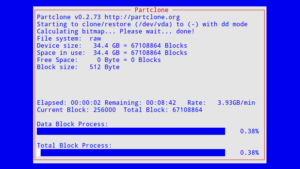Here’s how to create a fail-to-ban type of functionality on an EdgeRouter completely using BASH, without installing any 3rd party packages. We are going to create a single script and add a scheduled job to run it. That’s all there is to it.
Step 1
Run the following
vi /config/scripts/fail-to-ban
Now we need to turn off auto indent before copying and pasting the script below. Type the following:
:set noai i
Now paste the following script into the file:
#!/bin/bash
PATH=$PATH:/usr/bin:/bin:/sbin:/usr/sbin
ATTEMPTS=10; # NUMBER OF ATTEMPTS IN A GIVEN INTERVAL
INTERVAL=600; # INTERVAL (IN SECONDS) TO WATCH FOR FAILED ATTEMPTS - HISTORICALLY FROM CURRENT TIME
PERMBAN=100; # AFTER THIS NUM OF FAILED ATTEMPTS, BAN UNTIL LOG ROTATES
BLOCKSECS=3600; # AFTER THIS TIME (IN SECONDS), UNBLOCK A BLOCKED IP
BLOCKED_ALREADY=""
BLOCKED_NOW=""
SKIPPED=""
EXPIRED_BLOCK=""
NOW=`date '+%s'`
isip() {
ISIP=$1
if [ $(echo $IP | sed 's/[^.]//g' | awk '{print length; }' 2> /dev/null) -eq 3 ]; then
ISIP=1
fi
}
fail2ban() {
# echo failing $IP with count $COUNT and lastcount $LASTCOUNT
IP=$IP
EXISTS=`nice -19 iptables -n -L | grep $IP | wc -l`
IS_LOCAL=`echo $IP | grep -E '^10\.|192\.168|127\.' | wc -l`
if [ $EXISTS -gt 0 ]; then
BLOCKED_ALREADY+=",$IP:$COUNT"
# echo "IP $IP is already blocked"
elif [ $IS_LOCAL -eq 1 ]; then
SKIPPED+=",$IP:$COUNT"
# echo "IP is local IP. Not blocking"
else
if [ ! "$IP" == "" ]; then
# echo "Blocking IP $IP after $COUNT abuses."
BLOCKED_NOW+=",$IP:$COUNT"
iptables -I INPUT 1 -j DROP -s $IP
echo "`date`:$IP:$NEWCOUNT:$COUNT:BLOCKED" >> /tmp/banned.log
fi
fi
}
updateList() {
NOW=`date '+%s'`
sed -i /tmp/ip-list.log -e "s/:"$IP":"$LASTCOUNT".*$/:"$IP":"$COUNT":"$NOW"/"
}
updateTime() {
NOW=`date '+%s'`
sed -i /tmp/ip-list.log -e "s/:"$IP":"$LASTCOUNT".*$/:"$IP":"$LASTCOUNT":"$NOW"/"
}
showList() {
LIST="$2"
DESCRIPTION="$1"
if [ ! "$LIST" == "" ]; then
echo "$DESCRIPTION"
for i in `echo "$LIST"`
do
BIP=$(echo $i | sed -e 's/:.*$//')
BCOUNT=$(echo $i | sed -e 's/^.*://')
if [ ! "$BIP" == "" ]; then
echo $BIP $BCOUNT
fi
done
fi
}
checkExpired() {
BLOCKED=$(nice -19 iptables -L INPUT -n | grep "^DROP" | sed -e 's/^.*-- //' | sed -e 's/ .*$//')
for i in `grep -e "$BLOCKED" /tmp/ip-list.log`
do
IP=`echo $i | cut -d':' -f2`
isip $IP
COUNT=`echo $i | cut -d':' -f3`
LASTACTION=`echo $i | cut -d':' -f4`
if [ $((NOW-LASTACTION)) -gt $BLOCKSECS ] && [ ! "$IP" == "" ] && [ $ISIP -eq 1 ] && [ $COUNT -lt $PERMBAN ]; then
LINE=`nice -19 iptables -L -n --line-numbers | grep "$IP" | cut -d' ' -f1`
if [ ! "$LINE" == "" ]; then
echo "Removing block on $IP"
echo "$(date):$IP:UNBLOCKED" >> /tmp/banned.log
# EXPIRED_BLOCK+=",$IP"
echo iptables -D INPUT $LINE
iptables -D INPUT $LINE
fi
fi
done
}
if [ ! -f /tmp/ip-list.log ]; then
touch /tmp/ip-list.log
fi
# CLEANUP - KEEP ONLY HACKERS FROM TODAY
echo -n "" > /tmp/ip-list.new
IFS="
"
for i in `grep "^$(date +%Y%m%d):" /tmp/ip-list.log`
do
if [ ! "$i" == "" ]; then
echo $i >> /tmp/ip-list.new
fi
done
mv /tmp/ip-list.new /tmp/ip-list.log
# Do some checking to see if the logs actually changed
if [ -f /tmp/this-run ]; then
mv /tmp/this-run /tmp/last-run
else
touch /tmp/last-run
fi
ls -1 --full-time /var/log/auth.log > /tmp/this-run
CHANGE=$(diff /tmp/last-run /tmp/this-run | wc -l)
if [ $CHANGE -eq 0 ]; then
echo "No change since last run"
checkExpired
exit
fi
IPLIST=`nice -19 grep failure /var/log/auth.log | grep rhost | sed -e 's/^.*rhost=//' | sed -e 's/ .*$//' | sort | uniq -c | sed -e 's/^ *//' | sed -e 's/ /:/' | grep -E ":[0-9.]*$" | sed -e "s/^\(.*\)$/$(date +%Y%m%d):\1/"`
for i in `echo "$IPLIST"`
do
#echo $i
COUNT=`echo $i | cut -d':' -f2`
IP=`echo $i | cut -d':' -f3`
DATE=`echo $i | cut -d':' -f1`
isip $IP
LASTCOUNT=`cat /tmp/ip-list.log | grep ":$IP:" | cut -d':' -f3`
ELAPSED=`cat /tmp/ip-list.log | grep ":$IP:" | cut -d':' -f4 | sed -e 's/\n//g'`
ELAPSED=$((NOW-ELAPSED))
if [ "$COUNT" == "" ]; then
COUNT=0
fi
if [ "$LASTCOUNT" == "" ]; then
LASTCOUNT=0
fi
NEWCOUNT=$((COUNT-LASTCOUNT))
if [ ! "$LASTCOUNT" == "" ] && [ $LASTCOUNT -eq 0 ] && [ $ISIP -eq 1 ]; then
echo "$DATE:$IP:$COUNT:$NOW" >> /tmp/ip-list.log
# echo "Adding $IP to the IP tracking log with count $COUNT"
fi
# echo "IP:$IP NEWCOUNT:$NEWCOUNT LASTCOUNT:$LASTCOUNT COUNT:$COUNT ELAPSED:$ELAPSED ISIP:$ISIP ATTEMPTS:$ATTEMPTS INTERVAL:$INTERVAL"
if [ $NEWCOUNT -ge $ATTEMPTS ] && [ $ISIP -eq 1 ] && ( [ $ELAPSED -le $INTERVAL ] || [ $COUNT -gt $PERMBAN ] ); then
if [ $LASTCOUNT -ne 0 ]; then
echo "Updating IP:$IP with NEWCOUNT:$NEWCOUNT ATTEMPTS:$ATTEMPTS ELAPSED:$ELAPSED INTERVAL:$INTERVAL ISIP:$ISIP"
updateList
fi
fail2ban
elif [ $NEWCOUNT -ge $ATTEMPTS ] && [ $ISIP -eq 1 ]; then
echo "Updating the timestamp for IP $IP; +$NEWCOUNT since last update"
updateTime
fi
done
checkExpired
IFS=","
showList "Blocked | Attempts" "$BLOCKED_ALREADY"
showList "Newly Blocked | Attempts" "$BLOCKED_NOW"
showList "Skipped | Attempts" "$SKIPPED"
showList "Expired" "$EXPIRED_BLOCK"
Now you need to exit and save your changes.
esc :wq
Now let’s make the script executable:
chmod a+x /config/scripts/fail-to-ban
And lastly, we need to add a job to run this periodically and also disable hostname lookups in SSH to make the script’s IP validation work properly and remove a possible DoS vector.
configure set system task-scheduler task failtoban executable path /config/scripts/fail-to-ban set system task-scheduler task failtoban interval 1m set service ssh disable-host-validation commit save
Done! Now your EdgeRouter should be protected against brute force login attacks.








